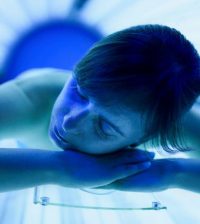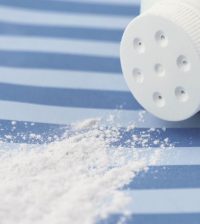- EPA Earmarks $3 Billion to Replace Lead Pipes Nationwide
- Johnson & Johnson Will Pay $6.5 Billion to Settle Talc Ovarian Cancer Lawsuits
- No Sign of Bird Flu in Ground Beef, USDA Says
- U.S. Maternal Deaths Declined in 2022
- Economy, Election Spur Rising Anxiety Among Americans in 2024
- Day Care Pick-Up Often Involves Sugary Snacks, Study Finds
- A Third of Young Adults Still Believe ‘Tan Is Healthier’ Myth: Survey
- MRNA Vaccine Fights Deadly Brain Tumor in Small Trial
- AI Won’t Replace ER Doctors Anytime Soon: Study
- Sleep Apnea Linked With Late-Life Epilepsy
Kids’ Sun Safety Means ‘Slip, Slap, Slop’

Children spend a lot of time outside in the summer, so parents need to stay on top of their sun protection, a skin cancer expert advises.
Much of a person’s risk for melanoma — the deadliest form of skin cancer — comes from their sun exposure as a child.
“Healthy sun-protection habits come in three forms — sometimes referred to as slip, slap, slop,” said Dr. Vernon Sondak. He is head of the skin cancer department at the Moffitt Cancer Center in Tampa, Fla.
“Slip on protective clothing, like long-sleeve shirts and long pants with an adequate UV (ultraviolet radiation) protection factor,” Sondak said in a center news release. UV protection factor (UPF) is the clothing equivalent of sun protection factor (SPF) for sunscreen.
Next, slap on a hat — not just a baseball cap — to protect your face, head, ears and neck. And don’t forget to protect your eyes with sunglasses, he added.
Last, but not least, slop on sunscreen — and use plenty of it to cover all your exposed skin. “Then reapply it every few hours and after swimming,” Sondak advised.
Sunscreen comes third on this list for a reason, he said. The best protection is staying out of the sun during peak UV hours (10 a.m. to 3 p.m.) and protecting skin with a big hat, sunglasses and protective clothing when you are outside.
“Sunscreen should be your third line of defense, not your first,” Sondak stressed.
Schools should ensure that children are adequately protected from the sun during recess, gym classes and other outdoor activities, the skin-cancer specialist added.
Noting that some schools require a doctor’s prescription or a parent’s note before a child can use sunscreen or wear a hat at school, Sondak said some of these rules may go too far.
“We recognize that there are legitimate concerns that do sometimes arise when schools allow students to bring sunscreens and hats to school, but these are clearly addressable,” he said.
“A parent’s note might be a reasonable request, but a doctor’s prescription is neither necessary nor appropriate for such a fundamentally important protection,” Sondak said.
More information
The American Academy of Pediatrics has more on sun safety.
Source: HealthDay
Copyright © 2024 HealthDay. All rights reserved.










